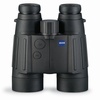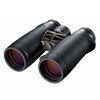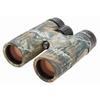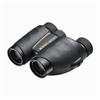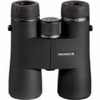Buying Advice: Binoculars
While the exact origin of the telescope is hard to determine, it is known that Jan Lippershey applied for the first patent in 1608. During the patent application process, it was requested that Lippershey, an eyeglass maker in what is now Holland, produce a device that could be used with two eyes instead of just one. Though he completed what could very well have been the first pair of binoculars—two similar telescopes that provide a magnified view of distant objects connected by a single frame—his patent was denied because it was thought that knowledge of this device already existed.
Since that time, binoculars have gone through various stages of testing and development to become the modern version that we see in stores today. They are used as opera glasses, military field glasses, and viewing glasses for spectator sports and hobbies like bird watching.
What to Know Before You Buy
Binoculars can be broken down into two types by their prisms, which let you see images in their correct orientation. Porro prisms and roof prisms are commonly used today. Porro prisms are generally superior to roof prisms and allow for easy adjustment of the space between your eyes. Roof prisms are more compact but generally harder to adjust and inferior to Porro prisms in all but the most expensive binoculars.
After being differentiated by their prisms, binoculars can be broken down by their size. Large binoculars work well in low-light situations because they capture more light. They are also steadier and allow for a wider field of view, the area seen through your binoculars and measured in degrees. Even though viewing quality is better, large binoculars are more expensive, heavier, and too much for all but serious viewers. Medium sized binoculars are a great compromise between large and compact sizes because they are smaller than large binoculars but still provide high levels of light transmission. Compact binoculars, while lacking the high light transmission and magnification power of their larger counterparts, are great for daytime use and are light enough to pack with you and use for extended periods of time.
After being differentiated by their size, binoculars are also built with specific uses in mind that require unique features. Not just for telescopes anymore, large binoculars can be used for astronomy, waterproof binoculars can be used for a variety of water sports such as boating, night-vision binoculars can help you see in the dark, range-finder binoculars can help you find exact distances, and binoculars can come with built-in digital cameras and image stabilizers as well as increased zoom capabilities. The possibilities are endless!
The pair of numbers used to describe binoculars is the magnification and diameter of the objective lens in millimeters. Most consumers refer to the magnification when they are buying a pair of binoculars. Common binocular magnifications are 6x, 7x, 8x, 9x, and 10x closer than the human eye. There are also variable zoom binoculars that have a magnification range, but these often let in less light and don’t perform as well as fixed magnification binoculars. Because extremely high-powered binoculars can be hard to keep steady and let in less light, 7x is the magnification power most popular with consumers because it is the most well-balanced. The diameter of the objective lens, also known as the aperture, refers to the size of the front lenses. The larger the diameter, the more light that enters through and the better you can see, but the larger and heavier your binoculars become. The size of the exit pupil is determined by the magnification and the diameter of the objective lens and determines how much light is transmitted to your eye. If the diameter of the exit pupil is smaller than the diameter of the pupils of your eyes, it can limit your ability to see in dim light.
Most binoculars have antireflection coatings that assist in light transmission and produce the blue, red, or green reflections you see when you look through the front lens. From a manufacturer’s standpoint, coated means a single layer of antireflection coating on just some of the lens elements. Fully coated means that all surfaces that come into contact with air are coated, which is a good standard. Multi-coated means that some lens surfaces have multiple layers of antireflection coating. Fully multi-coated means that all lens surfaces that come into contact with air are coated in multiple layers, which is what you should look for when purchasing a pair of binoculars. Additionally, red coatings can also reduce glare in bright light.
Properly adjusting a pair of binoculars lies in using the diopter control, which holds the two barrels of the binoculars in proper relation to your eyes. Once this is set, focus the binoculars normally using the central focusing knob. If you suspect a problem with your binoculars, make sure the diopter control didn't accidentally get turned, which can keep your eyes from focusing properly and render the binoculars useless.</p>
When going to purchase a pair of binoculars, it is important to take both the optical and mechanical quality into consideration. A lot of things can influence the quality of your binoculars, such as the type of lens and prism, the size, the coatings, the materials used, and the exterior finish. When it comes to binoculars, you definitely get what you pay for. Spending more for better quality materials and construction will definitely show through in the field.
Try to keep in mind what activities you are going to use your binoculars for before you buy them. It wouldn’t make sense to buy large, heavy binoculars if your goal is to take them on nature hikes. Alternately, you wouldn’t want compact binoculars for stargazing. Also, it is best to consider your budget and purchase the best pair you can afford, but make sure to keep in mind that the most powerful binoculars aren’t always the best and that finding the right balance is key to enjoying using your binoculars for years to come.

